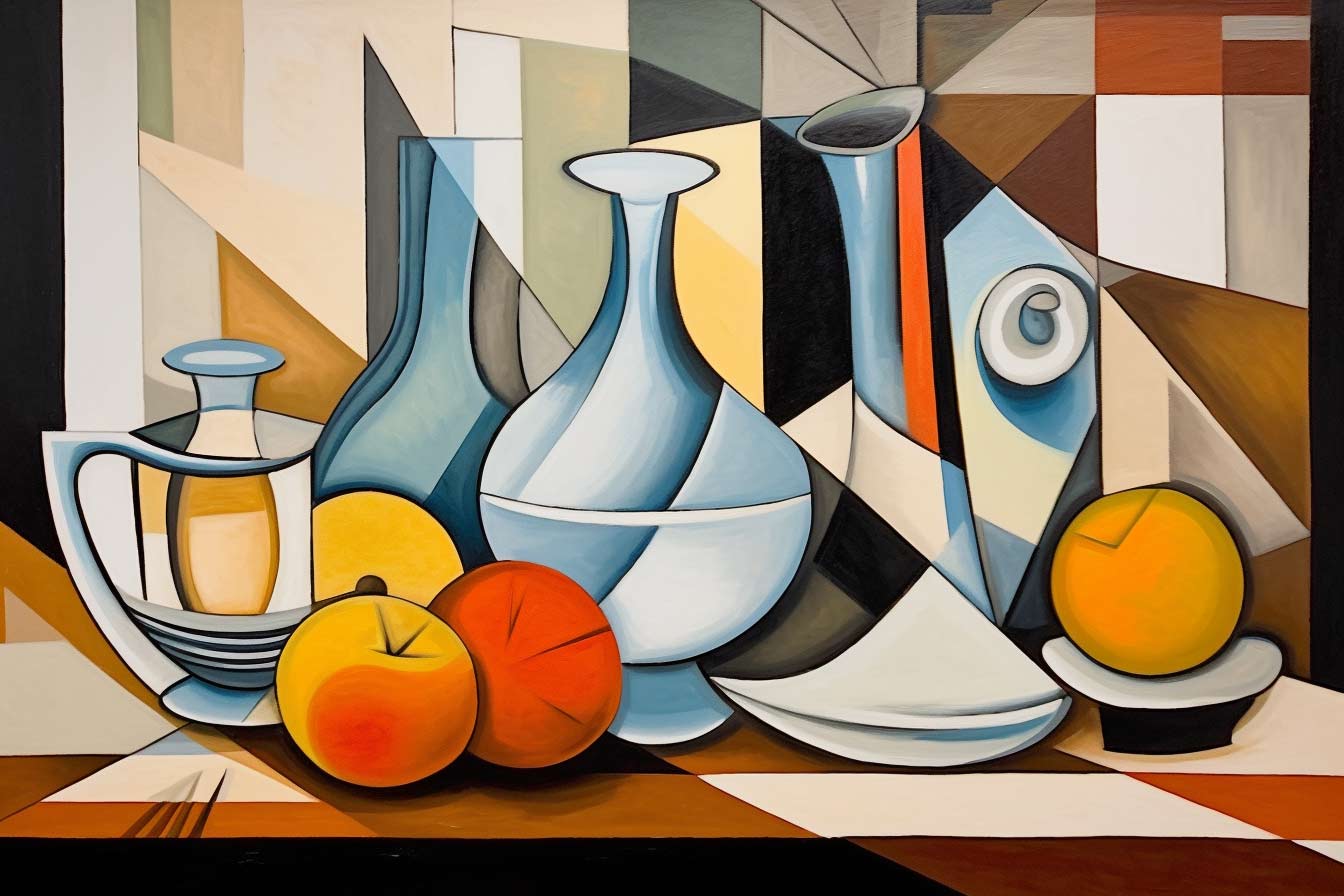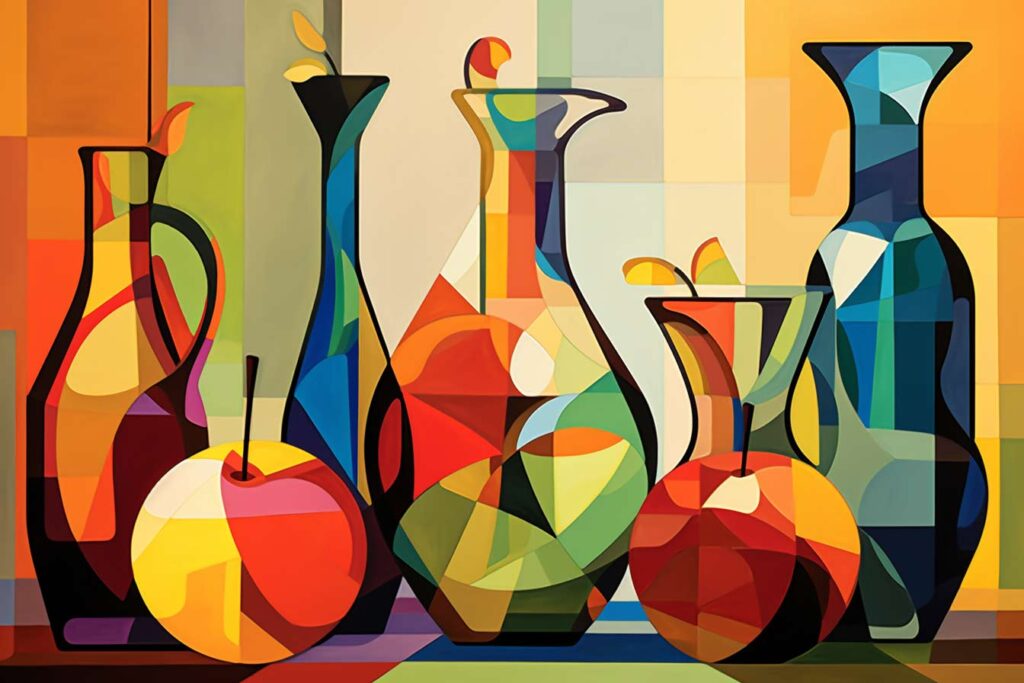Fragmented Still Life: Everyday Objects in Multifaceted Views
Art, in its essence, is a dialogue between the beholder and the depicted, a narrative that unfolds in myriad forms and sentiments. Through the ages, still life has stood as a testament to the artist’s ability to elevate the mundane, casting everyday objects in a limelight that reveals their subtle grace. Enter the realm of Cubism, where this traditional form takes a daring turn, cleaving and reassembling the ordinary to present a tableau that is both fragmented and holistic, both familiar and novel.
The Dance of Facets: Objects in Splintered Glory
What does it mean to view an apple not just as a wholesome fruit, but as a symphony of its varied perspectives? In the hands of the Cubist, such musings are given form. Objects, from the humble vase to the ripe fruit, are disassembled, their contours and textures splintered into multifaceted geometries. Each facet becomes a testament to a distinct view, a unique shimmer of light, a singular play of shadow.
Beyond the Obvious: The Multilayered Gaze
The beauty of Fragmented Still Life lies not in its deviation from reality, but in its amplification of it. The observer is invited, no, compelled to engage with objects not as monolithic entities but as intricate compositions of myriad angles and dimensions. The roundness of a fruit, the curve of a bottle, the fold of a cloth, all are presented in an array of views, each clamoring for attention, each adding depth to the narrative.
Elevating the Everyday: The Transcendence of the Mundane
In this art form, there is a rebirth, a rediscovery. Objects, often relegated to the backdrop of life, are thrust into the foreground, demanding a renewed appreciation. But more than that, they challenge our perception. An apple is no longer just an apple, but a confluence of its many avatars. A vase is not merely a vessel but a dance of light and form.
Fragmented Still Life is not just an artistic style; it is an invitation to perceive deeper, to gaze longer, and to unravel the multitudes that reside in the ostensibly simple. It is a celebration of the mundane, rendered in a frame that is anything but. Through the Cubist’s lens, everyday objects are not just depicted; they are celebrated, their diverse facets and perspectives converging to offer a tableau that is at once arresting and enlightening.

